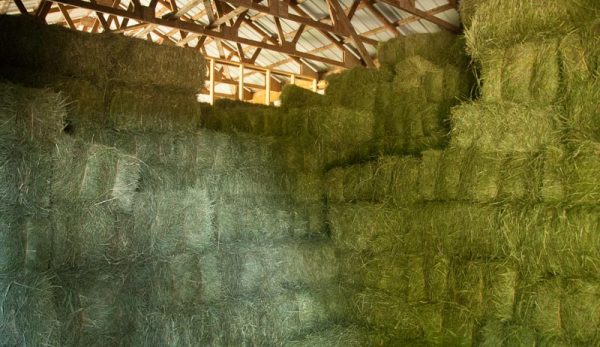
Sometimes, it can seem as though producing square hay bales is more of an art than a science. Sure, the advances of modern weather forecasting make it easier to identify sunny stretches suitable for baling. And a hay moisture and temperature tester reduces the guesswork in determining whether hay is dry enough to safely bale.
But other areas of making hay aren’t quite so refined. For example, there’s the art of adjusting the baler so the bales it creates are suitable in terms of size, weight and twine tension. These three aspects are all related, and it can be trickier than you think to adjust one without affecting the others.
There are many settings you can adjust. And many factors influence the end results. But getting them correct is important for making good bales.
Read more: A hay moisture tester helps with baling and storage.
Headaches with Hay Bales
Let me give you an example. On my farm, we bale around 2,000 small square hay bales each summer. Since our crew is small, we try to keep each bale relatively lightweight for easy handling as we stack them 12 bales high in the hay barn.
But for whatever reason, we struggled to nail down the right blend of size, weight and twine tension last summer. While the bales were indeed very light (I’ve never been able to toss bales so high!), they were also far too loose.
The amount of slack in the twine was unmanageable. Bales came apart left and right during stacking. And the stack itself was unstable since loose bales make poor building blocks.
As the summer went on, we managed to tweak the baler settings to produce tighter bales while still keeping the weight in a suitable range. But our troubles with loose bales weren’t over. Stacking hay in a barn isn’t the last time you’ll handle it.
Read more: Here are tips for calculating your baling twine needs.
Side Note
Now is the time for a quick side note. Even when hay is baled “dry,” it still contains at least a little moisture.
As the hay continues to dry after baling, the bale will lose weight and—in my experience—physically shrink at least a little. This isn’t really an issue with tightly packed bales. But since many of our bales were already low on tension, the drying/shrinking process only exacerbated the problem.
Indeed, by the time we were feeding those loose bales in January and February, they consistently fell apart as hay slipped and squirmed out of its low-tension twine. Handling the bales became so unwieldy that we ultimately resorted to packing the loose hay into large cardboard boxes for easier handling and transport.
Fortunately, the tighter bales we made later in the summer are holding together better. But a challenging winter of handling exploding hay bales has reiterated a lesson: it’s important to take the time to get baler settings correct and create hay bales with proper twine tension.
Lightweight bales are nice, but not if it means carrying them around in boxes because they fall apart too readily.




